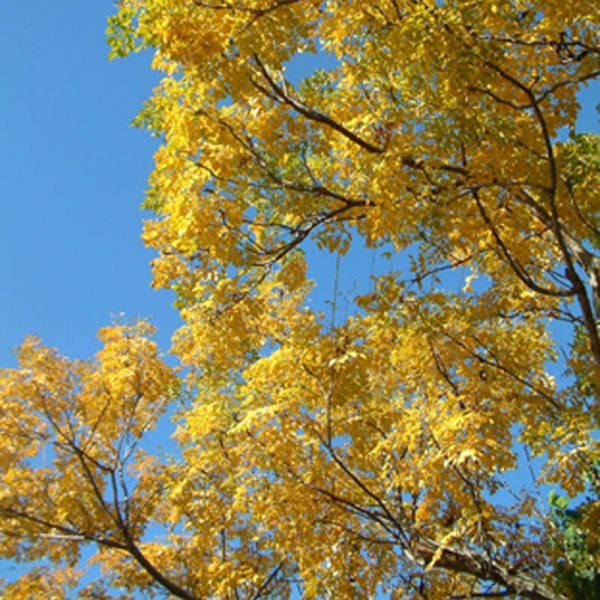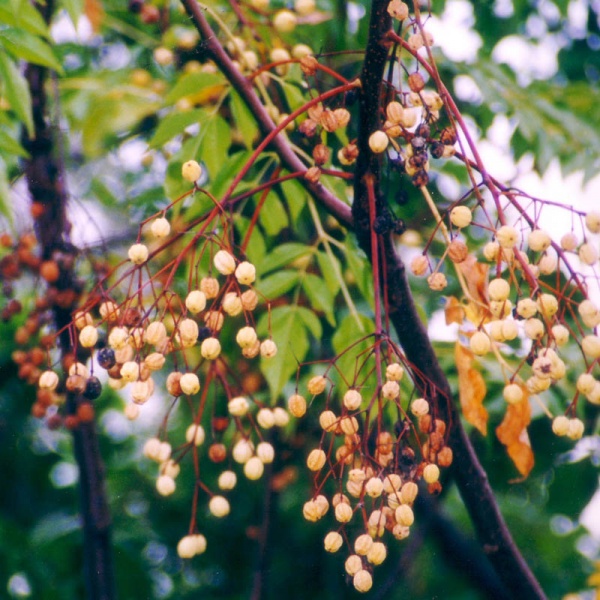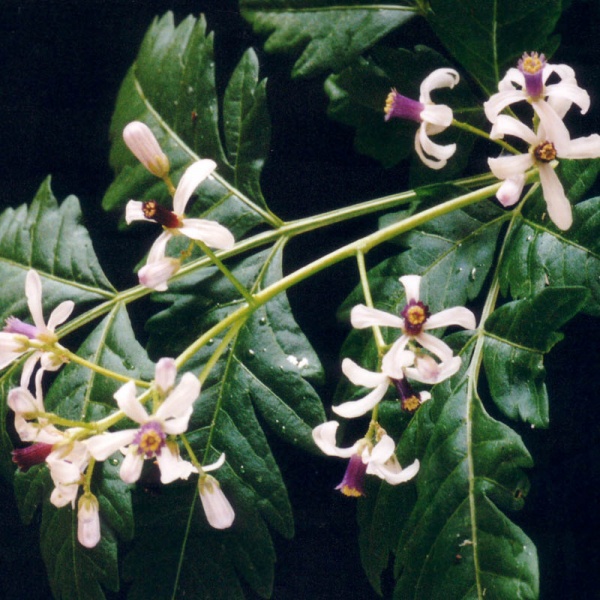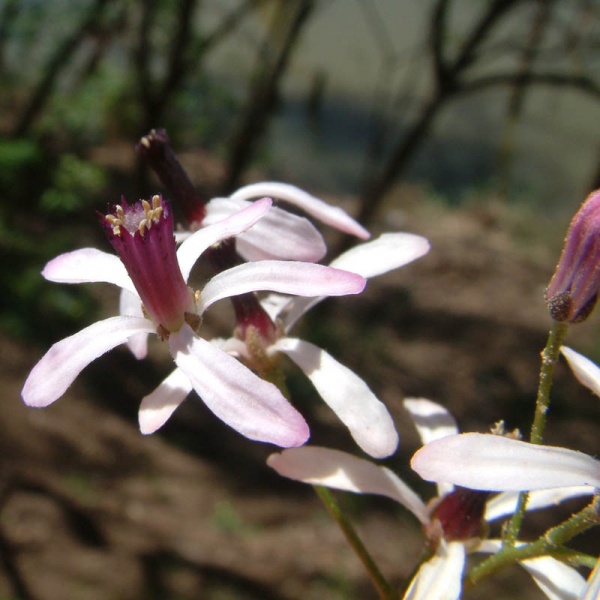Scientific Name: Melia azedarach
-
Pronunciation:MEEL-ee-ah as-ah-DAR-ack
-
Common Name:White Cedar




-
Derivation:Melia: Gr. meli - honey and Gr. melia for the Ash Tree because of sweet sap of some species. (Names by Linnaeus because of ash-like leaves).||azedarach: Persian Azad-darakht, the common Indian
-
Type:
-
Family:MELIACEAE
-
Flowers:white pink
-
Fruit:yellow
-
Vegetation Type:Dry Eucalypt Forest
-
Species List:Weyba Esp, Fraser Island, Mill Point, Johns, Cooroibah Conservation Park, Cooroibah Bushland Reserve, Cranks Creek, Boreen Point, Leslie Drive Roundabout TAFE Noosa Banks, Kin Kin Arboretum, Heritage Park
Cultural Notes
POISONOUS seeds used for beads or rosaries. Leaves and bark were bruised and used as a quick-acting fish POISON. Timber: Unsuitable for general construction. Used for interior joinery and panelling.
Identification Notes
Deciduous||Leaf: compound, lacy.||
Associated Fauna
Fruit eaten by possums and cockatoos, also fig birds and Rose-crowned fruit doves
Landscaping Notes
Noosa Council Preferred Species list. Landscaping potential in suitable areas. Successfully propogated by Noosa & District Landcare. Average to moist soils.||Shady rounded canopy. Hardy in all situations. Excellent street tree. ||Flowers have scent of chocolate, fruit is decorative||Propagation from seed in autumn to winter which germinate easily. ||Trees can be defoliated by procession caterpillars but this occurs just before leaf drop in winter.||Feature foliage||Successfully propagated by Tin Can Bay City Farm Nursery|Successfully propagated by Mooloolah Native Nursery|Successfully propagated by Florabunda Bushcare nursery, Woombye


